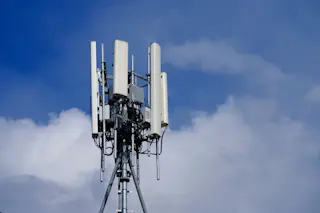Microwave ovens are fast, but they do have a few annoying kinks. Eggs can explode. French fries tend to be soggy. About 90 percent of the new microwavable food products unveiled each year are failures. To find out why, some food industry representatives recently consulted Ashim Datta.
"There were a lot of interesting things about microwave food processing that we did not have very good answers to," says Datta, a food processing engineer at Cornell. He and his graduate student Hua Zhang created mathematical and computer models to quantify exactly what happens to various types of food in a microwave.
Microwaves bouncing around inside an oven cook food by vibrating molecules in the food, primarily water, which generates heat. Usually the microwaves penetrate the surface of a food but peter out before they get to the center. This doesn't always hold true, however. The heating pattern depends on the shape ...














